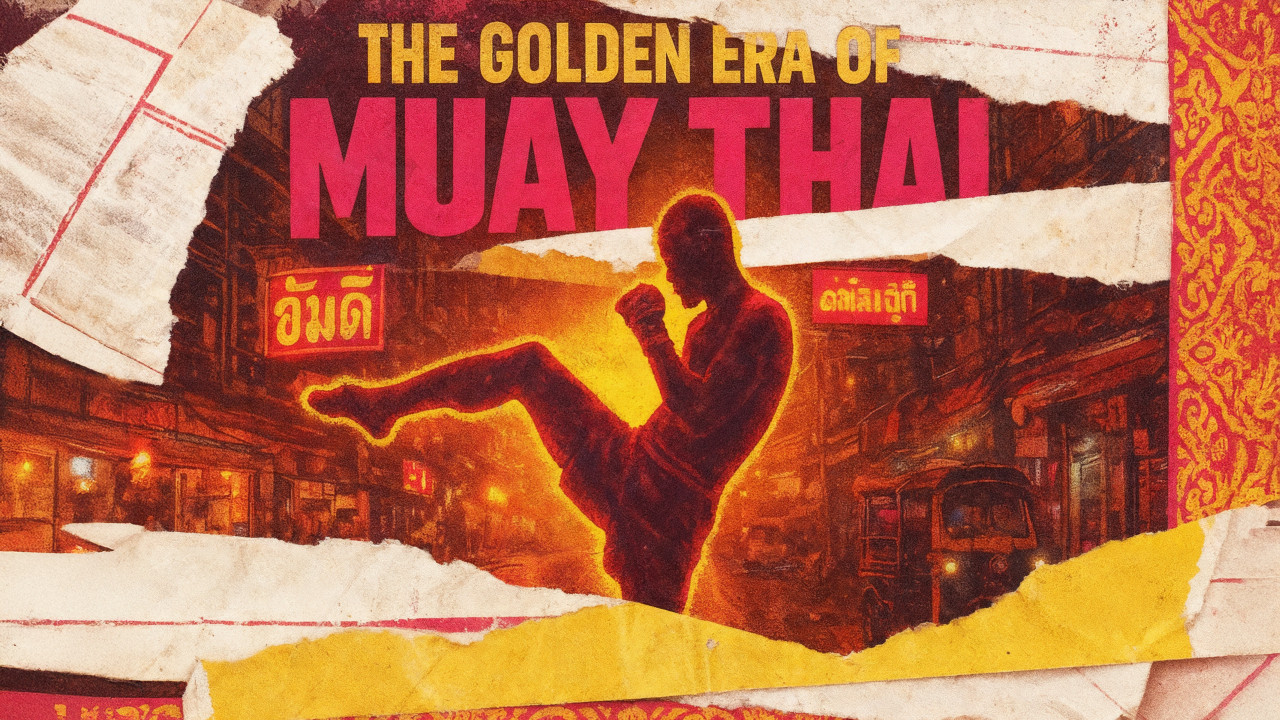Exploring the Golden Era of Muay Thai

Muay Thai has exploded in popularity in the United States within the last decade. Whether practiced as a standalone martial art or as a part of a mixed program, Muay Thai has become one of the go-to striking arts taught in MMA gyms.
What may come as a surprise is that Muay Thai experienced a far bigger surge in popularity in its native Thailand in the 1980s and 1990s. As Alby Tam of Combat Culture explains in the above video, this roughly decade-long era became known as the Golden Era of Muay Thai and produced some of Thailand’s most celebrated fighters.
Setting the Stage for the Golden Era
Muay Thai has been practiced in Thailand for centuries, where it is often referred to as the “art of eight limbs” because of its use of strikes involving punches, elbows, knees, and kicks, as well as sweeps and clinching techniques. Despite being around for so long, Muay Thai was not a huge spectator sport, even in Thailand.
This began to change in the 1980s. Like much of Southeast Asia, Thailand experienced rapid economic growth and urbanization. Between the years of 1985 and 1995, the country’s growth rate averaged 8% and peaked at 13.6% in 1988. For reference, the United States experienced its most vigorous period of sustained growth in the 1900s during the 1960s, with an average growth rate of 5.1% per year. The boom period was especially felt in the country’s capital city of Bangkok, which became a magnet for young and talented people from smaller cities and rural areas.
The Rise of the Golden Era
As the people flocked to the city, took jobs, and suddenly found themselves with disposable income, they demanded entertainment. Muay Thai filled that gap. As record attendance at Bangkok’s biggest venues, including Lumpinee and Rajadamnern stadiums, fueled the popularity of the sport, recognition of individual fighters surged both nationally and internationally.
This was not just a niche sport for a few wealthy people who could attend the fights in person. Muay Thai fights were regularly televised and the improved standard of living throughout the country meant that most families had access to television. The sport was enjoyed by a truly mass audience, and it became the national sport of Thailand.
Those bigger crowds meant more money for promoters. Over time, the amount that big-name fighters could demand for fights also rose. Successful fighters became national celebrities and drew bigger crowds. Gyms also reaped the rewards, as they could demand larger sums from students if they could claim that a superstar got his start at their gym. Moreover, as gyms got more fighters, it increased their odds of producing a champion and growing their prestige. As a result, gyms started working harder to recruit better fighters at the same time that more athletes were realizing that they could make a good living by fighting. Muay Thai drew a lot of fighters from the countryside and out of poverty.
The Golden Era
This dynamic of recruitment and money produced some of the most talented fighters in the history of the sport. Having to constantly compete against fighters with so much talent pushed everyone to get better, and this environment fostered a level of greatness that has arguably never been seen before or since. Main event fights were regularly not only between two all-stars of the era, but between two of the all-time greats of Muay Thai.
Some the most famous fighters from the Golden Era that Alby mentions in the video include:
- Samart Payakaroon – Known for his fluid technique and high fight IQ
- Dieselnoi Chor Thanasukarn – One of the most dominant knee fighters (Muay Khao) in the history of the sport.
- Sagat Petchyindee – An aggressive Muay Mat fighter who was the inspiration for the character Sagat in Street Fighter.
- Chamuekpet Hapalang – Known for his precise and deadly knee strikes, he was known as the “Computer Knee Striker.”
The End of an Era
Muay Thai attracted a lot of talent and interest. It also attracted a lot of gambling. Though gambling was largely prohibited, an underground network grew around the Muay Thai community, and betting on fights became a big business. As the amount of money grew to truly enormous levels, a lot of matches began to seem staged. By the mid-90s, the influence of gambling had become undeniable. Far too many fights ended with suspicious outcomes and the sport lost credibility and fans.
At the same time, disposable income began to dry up throughout Thailand as the prosperity of the 80s and early 90s gave way to a period of hard economic times. Audiences began to shrink, which meant gyms were making less money and aspiring fighters weren’t getting the kinds of opportunities they had earlier in the decade. Though it never stopped being a national sport, Muay Thai did go through a period of relative decline in popularity and talent.
That is changing now. A new era of Muay Thai has emerged in recent years with a global audience. Fans of the sport are hopeful that Muay Thai’s global reach will allow it to attract increasingly better fighters and potentially even lead to another golden era.

